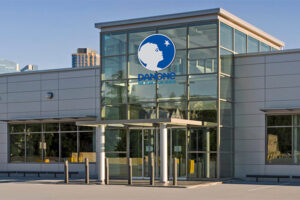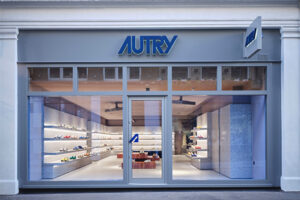By Maryna Gurevych
The mixed-use project format is a trend in Ukrainian commercial development these days, and the pandemic has only strengthened its position. There are several driving factors behind the situation:
Firstly, there is the issue concerning Kyiv’s population growth: As the heart of economic and business life, the country’s capital has grown by tens of thousands of people every year, despite the fact that fertility is 20-50% lower than mortality. Taking unregistered residents into account, about one million people have been added in the last five years, with that number reaching five million when inhabitants in the suburbs are included.
Secondly, as a result of the previous point, development density has increased sharply, driving urban areas to extensive growth and brownfield redevelopment. The cost of land has risen, which has prompted developers to look for more efficient projects.
Thirdly, the development of the creative sector and the 20-30% annual growth of the IT sphere have changed the make-up of Kyiv’s residents: An economically active and affluent audience, represented by millennials looking for modern trends and lifestyle has entered the scene, as has the need to satisfy all requirements with the maximum level of convenience and the minimum loss of time. It is the driving force behind the demand for “Live.Work.Shop.Play. Shoppingtainment” projects, as well as sustainable, omnichannel, and agile spaces. The development of the Kyiv market and the presence of leading architects, such as Leslie Jones Architecture, in collaboration with local urban experts have made the proposal of world-class projects possible.
The combination of such aspirations is most fully reflected in the concept of mixed-use formats.
Diversification of Risks
From the developer’s perspective, mixed-use projects allow for the diversification of risks and cash flow in volatile real estate markets. They provide synergies between different functions and have helped maintain rates in a changing business environment.
Despite the 5% increase in retail turnover in 2020, rental rates at shopping centers dropped 30% to 50% during the negotiation process, but the application of the percentage of turnover helped limit shopping center losses to between 10% and 30%. The retail sector is the one that recovers the most rapidly: For five consecutive years, Ukraine was ranked among the top 5 European countries for retail growth, and retail volumes (taking the shadow economy into account) surpassed Romania’s results. As a result, we expect retail real estate profits to recover in 2021, at least for successfully operating objects. In addition, demand for offices decreased by 50%, with rental rates falling by 15% to 20%; we do not expect the market to recover in 2021 due to the ongoing pandemic and new proposal pressures. Residential sales have fluctuated between a 15% to 20% decrease and a 10% to 20% increase, depending on the project.
Mixed-use projects could ensure stable profitability, with respect to different market dynamics, via the combination of profit diversification: Recovering retail rents and higher residential sales could cover business center losses or increase demand for office space, as flexible offices and infrastructure for the mixed-use project community are developed. There in another important point: Residential sales could increase financing for the development of commercial functions in terms of lack of debt financing.
Architecture, Concept Quality, and Location
These days, there are several factors that contribute to the success of mixed-use projects in Ukraine: the quality of the architecture, the quality of the concept, and the location. High-quality architecture enables projects to increase demand and turnover, and to work as unified mechanisms that create synergies and makes all spaces efficient and usable, thereby maximizing commercial output. The location determines the demand for functional collaboration: The most preferred locations for mixed-use projects are the CBD as well as nearby neighborhoods and transportation hubs. The popularity of public transport has steadily grown against the backdrop of the battle against traffic congestion, the need for cleaner air and reduced emissions, and the optimization of costs for citizens in the face of rising fuel prices.
The increase in customers at transport hubs has driven the transit-oriented development of projects that maximize the number of residential, commercial, and recreational areas within walking distance of public transit. Mixed-use projects best reflect the needs of transportation hubs and provide: a concentration of the interests of all residents in one place, ease of movement and time savings, maximization of pedestrian connections, the creation of a single community, and convenient transit connections with other parts of the city. Therefore, the combination of the further development of public transport in the capital and multifunctional construction at its main transport hubs is an example of modern and sustainable urban development, which will only become more relevant in the future.







